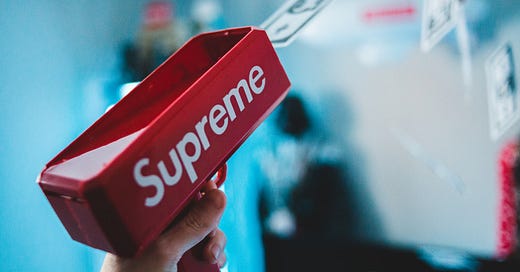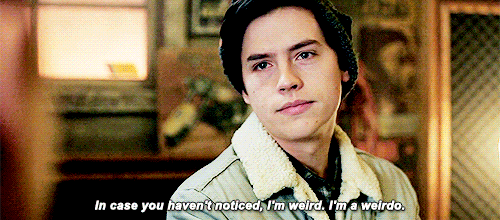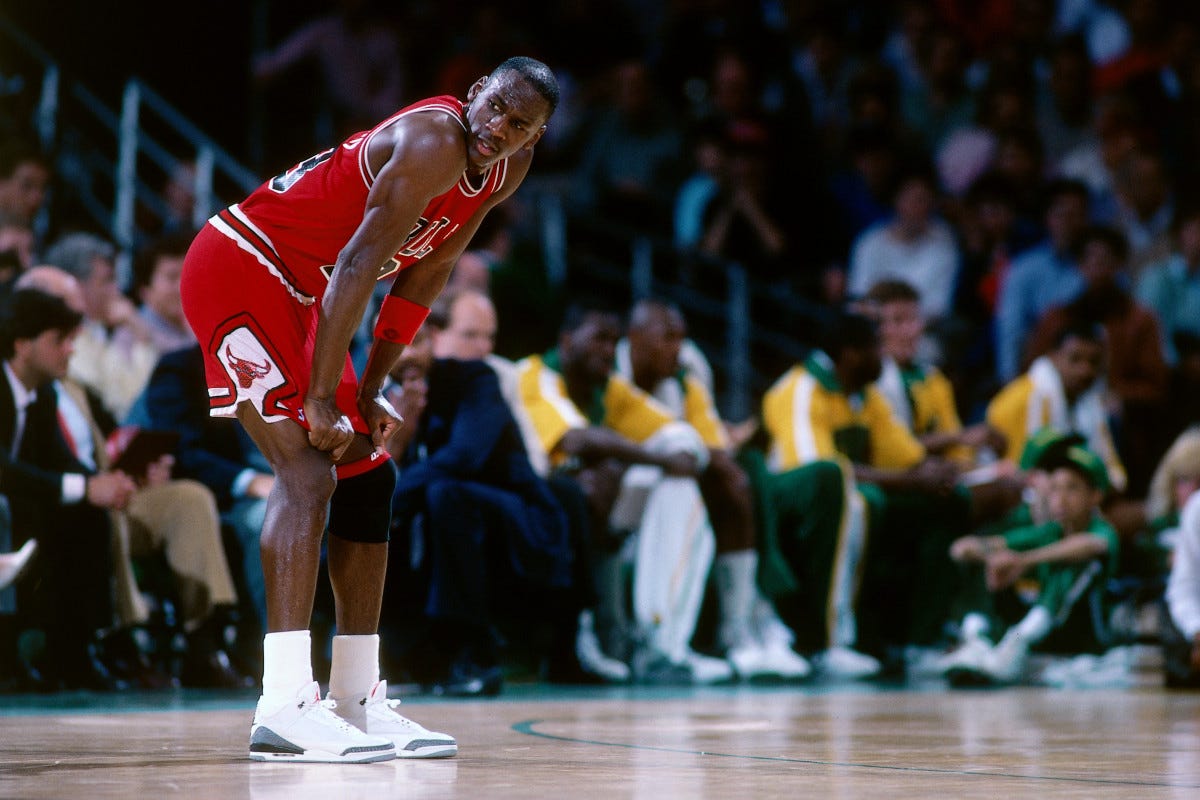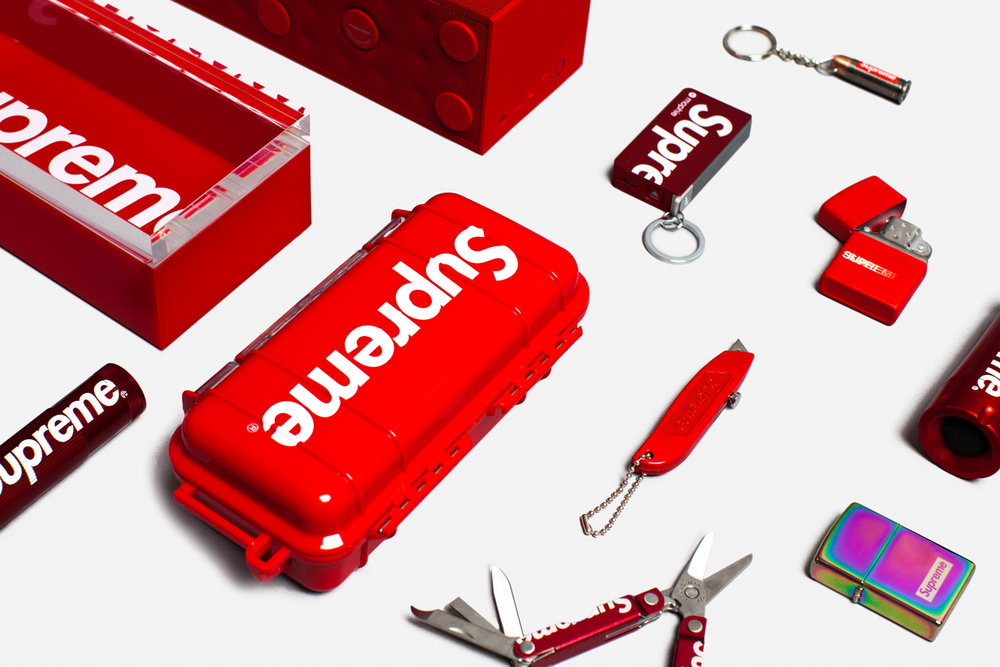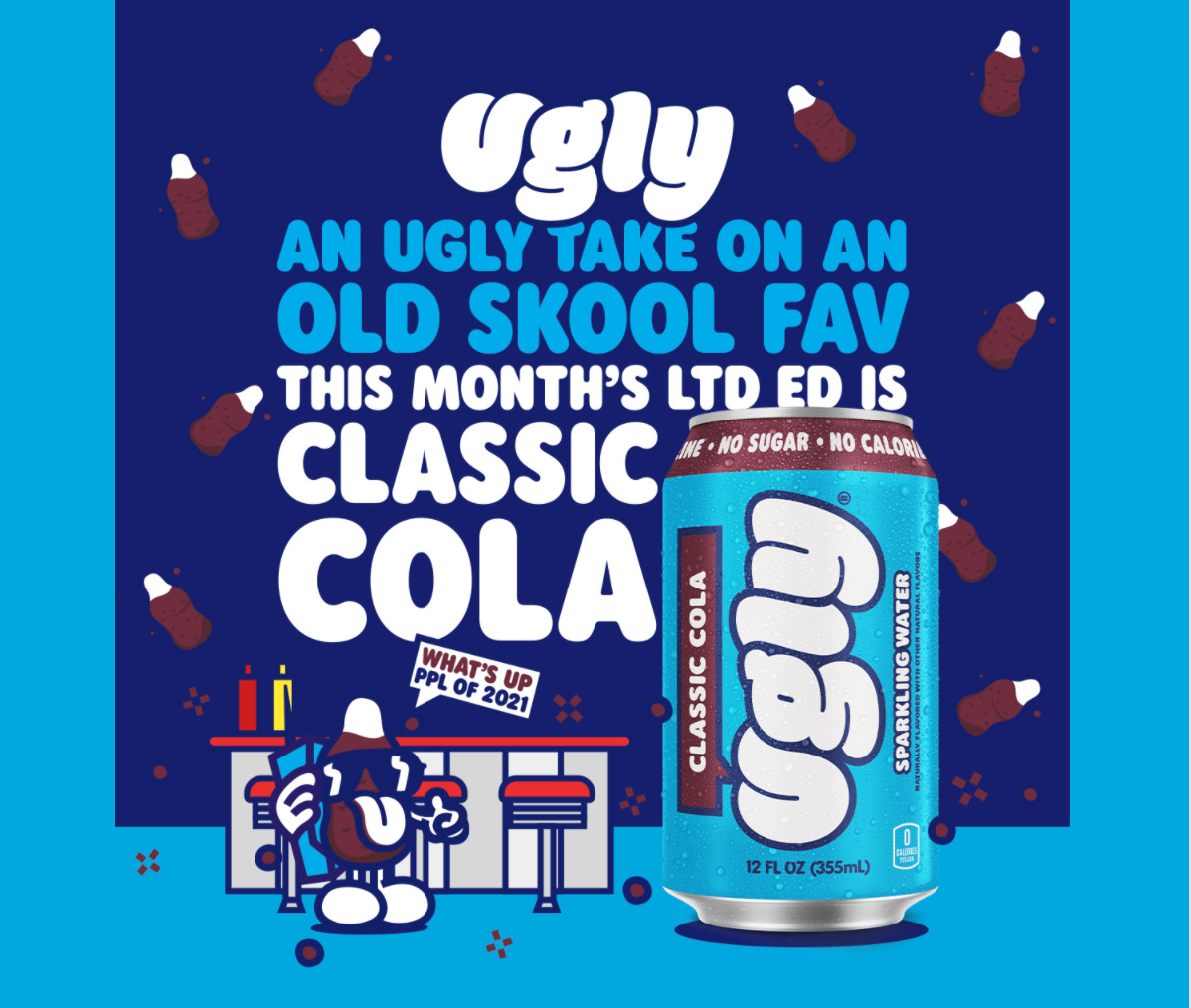Why Do We Love Limited Edition Drops?
Brands are making thousands off t-shirts and sneakers simply by making them scarce - what is it about a limited drop that sparks our excitement?
I’ve been called a lot of words over the course of the last few months of the pandemic.
One of them has come up pretty consistently from even some of my closest friends: Weird.
It’s not something I really flinch over. My cabinet is filled with some of the strangest snacks and products that living in a global pandemic with nothing but dispensable income and too much time on the internet will get you: CBD snacks, Keto cereal, Strawberry Cream sparkling water, and a number of exotic hot sauces and condiments accumulated from drops, giveaways, and contests.
I was thinking about how much I had paid collectively to get half these things (some that I barely used after purchase) and it had me reflecting on the strange nature of limited edition drops.
The concept is simple: On a certain day and time, limited-edition products are “released” and often promoted heavily for a short time - once they’re sold out, they’re sold out.
What is intriguing about drops isn’t actually the logistics of the model - it’s the effect that drops have on human beings.
Supreme, a streetwear company largely recognized for popularizing the concept of drops, is a perfect example to see the extent people will go for a drop.
In a piece titled Why Are So Many People Obsessed with Supreme?, reporter Jamie Clifton of Vice digs into the phenomenon that is Supreme. People have spent more than $2,600 on secondhand jackets, built Supreme shrines in their bedrooms, and even bought plane tickets and hired line holders to get ahead of Supreme drops.
Perhaps the wildest anecdote is the allure of a Supreme brick, a brick that the company made simply branded with their logo.
It’s currently listed on Ebay for as much as $10,000.
In some ways, Supreme hasn’t just created a commercial strategy around drops - they’ve created systematic cultural relics. They’ve almost created their own cult.
Facebook groups and communities have aligned around Supreme. More than just a clothing purchase, it’s almost become a game. A progressive chase of belonging to some exclusive club or identity.
What drives people to knock down barriers just to access a drop?
Why do people spend thousands on bricks and inane things like sparkling water?
Why do we love drops in the first place?
To Supreme and more, I decided to unpack the chaos… of drop culture.
What is Drop Culture?
While we probably think of Yeezys and Supreme today being the pioneers of drops, the actual drop marketing model was first popularized in the 1980s by more familiar sneaker companies.
The 1980s was a milestone decade for Nike - they coined “Just Do It”, went public, and signed Michael Jordan to a lifetime deal.
But in the spirit of keeping the brand elusive and luxurious, Nike produced many shoes exclusively for teams, some never even made available for standard retail.
Naturally, people freaked out as they watched their favorite players traverse the court in unattainable shoes. Nike’s stock (the actual one also but in this case the figurative one) rose and spawned a new community hungry for these exclusives: the sneakerheads.
Hardcore collectors would go to outlets, events, and warehouses to search for rare and vintage shoes. While Nike’s signature shoes become the largest target, Adidas, Converse, New Balance and Reebok all benefited from this newfound obsession with unique product collection.
It became a flywheel of starts once brands started to participate - brands would purposefully curate limited edition shoes, sneakerheads salivated over the drops and, in turn, built their own community around sporting and owning the latest and most exclusive pairs, much to the benefit of the brands.
This was the first large wave of what we know as drop marketing.
Drops then had their second big wave in 1994.
James Jebbia, a skate shop owner in lower Manhattan, lamented that most skate companies made clothing only for teens and not comfortable clothing older skaters, solving this problem by making his own t-shirts in small runs.
This was the birth of Supreme.
Supreme had a quick and interesting product trajectory, going from hoodies, sweaters, shoes, and household products, sparking fresh collaborations with surrealist painters and contemporary artists. Limited product wasn’t just a function of their supply chain - it was their primary goal. They wanted Supreme products to be low in stock (Jebbia claims they didn’t want to keep things people didn’t want) and capitalized on drops to drive their worth.
Not only did people crave the Supreme drops, Supreme collectors arose out of the woodworks to resell Supreme on the secondary market.
Part of the company’s allure came from Jebbia’s goal to almost build a rebellious brand. The outlandish clothing wasn’t so much a fashion statement as it was an ideological one.
Supreme was followed by a number of different brands with retail drops strung into their strategy over the years: Streetwear brand KITH, clothing store BAPE, and fashion label Aime Leon Dore among them.
One of the more famous recent examples is none other than Kanye West, who debuted his “Yeezy Season” shoes with Adidas, a prototype which sold for almost $1.8 million and who’s first drops sold out quickly. Its hype and resell value has almost put it on par with Supreme in terms of limited edition notoriety.
The reverb of drops within retail has sparked its interest in other industries.
Toothbrush subscription service Quip has adopted drop models to launch new items, as has furniture brand Outer and even fast food behemoth Shake Shack.
What’s the incentive for companies?
Of course, the easy one is logistics - limited edition drops allow companies to curb inventory as needed. But is there a more strategic imperative?
Ashley Nickelsen, founder and CEO of B.T.R Bar, who recently launched a limited edition of a new Cherry Chocolate Chip protein bar, told me that for her these drops are a solid data point.
“We've noticed that our customer base loves trying out and testing new flavors. As a result, limited edition drops give us the opportunity to test out more niche flavors while keeping our community excited and engaged.”
She cites Ugly Drinks and Olipop as two inspirations of companies who have successfully incorporated limited editions drops into their DTC strategy.
In a piece about limited drops for Shopify, Kaleigh Moore cites the buzz after the drop as a big incentive, mentioning that simple word of mouth and community development from a good drop is magnetizing for audiences.
Since drops can only be accessed at a single moment in time, you’re essentially concentrating all the excitement within that moment.
It’s easy to see why this is enticing for brands - why do consumers love it?
What Psychology Drives Drop Culture?
Human obsession with limited edition drops is effectively a study in human psychology altogether.
There are, of course, avid fans of companies that will buy new products or see genuine pragmatic benefit to a new product.
But there’s also a newer subset of customers that won’t necessarily care how useful the product is - they simply care that it’s limited edition and hard to get at a specific time.
The scarcity principle in social psychology shares the idea that humans put a much higher value on an object that’s scarce, almost at the expensive of how valuable it is in utilitarian terms.
Dr. Robert Cialdini, who studies scarcity, talks about how British Airways saw its sales skyrocket for a route in 2003 when it discounted that same route. In a video he states:
"It certainly didn't fly any faster, the service didn't suddenly get better and the airfare didn't drop. It had simply become a scarce resource. And as a result, people wanted it more."
In a piece I wrote last June on why scarcity appeals to us, I talked about how scarce items fills this deep, burning desire within us to feel unique. To increase our perceived value.
Scarcity almost biases us from seeing the actual value of the product and instead simply just seeing the acquisition of the product as its own reward.
When I think about how much I paid for some limited drops of my own, there was certainly a part of me that wondered what Strawberry Cream soda or Candy Cane tasted like with their respective Ugly Drinks drops - but what really drove buying those was the first post on Twitter, showing people you were holding something unique and bathing in all the incredulity that follows.
Candy Cane wasn’t my favorite and I certainly didn’t need ten cans of it - but it almost felt like its purpose was fulfilled after the first can.
Am I weird for buying things as a status signal? Perhaps. But is it that uncommon?
Not Boring author Packy McCormick wrote a piece this morning about NFTs as status vehicles, where he cites a piece by internet essayist Eugene Wei on status based on two principles:
People are status-seeking moneys
People seek out the most efficient path to maximizing social capital
Wei maps social capital against utility as a way to understand different types of social networks, with the ideal being networks that give you both utilitarian and social benefits. Packy cites WeChat as the “Holy grail”, capturing both simultaneously - but most networks operate between tradeoffs, finding one dimension first or ultimately only optimizing for one. It’s a steady balance.

In the context of drop culture, if we analyze it in the same “status as a service” framework, it becomes easier to see the human attachment to limited edition drops.
Scarcity is one of the easiest ways to optimize for social capital, since social capital can’t effectively be deflated by millions of people buying the same product.
Unlocking utility becomes the tougher part. Sure, the food and beverage drops are useful in their own right since you can consume them to stay alive - but Supreme unlocks a different type of utility.
Having a product that can gives you renewed life purpose, resell for thousands, and get you access into exclusive clubs can become a force to be reckoned with. It’s turned a commodity (a t-shirt) into something much more seductive.
Not all drops are on the level of Supreme but the desire for a drop remains the same. It extends beyond its pure utilitarian benefit into this social capital.
It doesn’t seem so crazy that thousands of people scope out Supreme clothing with the shaken tenacity of ancient art collectors. It’s the same psychology by which some of our biggest social networks have endured over time. It warms our status seeking monkey heart.
That all being said, the notion that buying a special seltzer water or unique t-shirt will scale beyond a certain group of people is certainly questionable. Most people won’t care that a t-shirt cost a thousand dollars and a plane ticket to secure. Dr. Dimitrios Tsivrikos, a consumer psychologist, says this doesn’t matter:
"Millennials in particular are very aware of different consumer tribes; they look to inspire or impress peers who share the same kind of interests as them, who will recognize that particular T-shirt. So, really, we do it for a very small group of people."
Final Thoughts
Whenever I do a deeper dive into a specific dimension of marketing psychology, it always begs the question: Can this be repeated?
I think of the poetic Supreme billboard on the highway in San Francisco, a billboard with nothing outside of the Supreme logo. A word that tells you everything you need to know. Lots of companies have attempted to do what they have with the same drop model and reached only a microbe of the same success.
While I do think Supreme, Palace, and all these other brands continue to define drop culture, I don’t think the future of drop culture will necessarily look like a Supreme.
As Packy wrote in his piece on NFTs linked above, NFT drops and the scarcity and community surrounding them are almost building their own extension of drop culture. The internet has basically challenged the notion that you even need an actual product to get the same benefit out of a LED - even just the defining characteristics of an experience that rewards social capital and utility above can be enough.
But if people find the utilitarian prospect of NFTs worrying, there’s also lots of practical reasons for drops.
Marlon Wayne is building Impulse, an app that uses drops to reward daily giveaways in return for feedback on products and services
Marco Marandiz is building Drop Party for brands to optimize on a range of moments from album releases, global events, new TV seasons and more
Couplet Coffee, a coffee startup built on a drop model by founder Gefen Skonick, is using drops to built a larger community around coffee (because let’s face it, nobody owns Starbucks merch) that also helps people get access to more exotic flavors
The bottom line in all of these is the value they bring in having someone connect to a sense of status (social capital!) and a sense of belonging within a moment.
Drops are ephemeral and in the traditional lens of online commerce, much harder to come by. More and more, the lines are blurred. Experiences, virtual coins, and small tokens to show you existed in a place in time are just as enticing as products.
Perhaps it speaks to a darker reality that merely making something ephemeral is candy for our brains.
But if drop culture, Supreme and all these other brands have taught us anything, it’s never just about the drop.
It’s about the world that the drop lets you enter.

